Mold usually isn’t a problem for most people. Everyone has mold spores in their home. However, when the spores find a wet, damp, or even moist area, they begin to grow very quickly. When they start growing in your home, health hazards start affecting your family and even your pets.
The most common health reactions to mold are Allergic Reactions. It affects both people who are allergic to mold and those who are not.
Along with allergic reactions, microbial growth can cause asthma attacks, allergy responses like sneezing, runny nose, skin rashes, and red or irritated eyes. For immune system compromised individuals, it can cause severe respiratory distress. This list isn’t complete and research is ongoing on the effects of indoor mold and health.
The best way to recover from the symptoms caused by mold, is to remediate it.

The image above is underneath a sink that was subject to a leak. The homeowner wasn’t quite sure whether or not he could tackle the remediation himself without calling a professional for help. Scroll down to find another image with the Homeowner’s decision.
Here are a few techniques from epa.gov for minimal (meaning under 10 square feet of area) mold remediation. ARS advises even for small areas, to call us so we can help you determine what you need to take care of the problem. Before working in the affected area, wear respiratory protection!
The tips and techniques presented in this section will help you clean up your mold problem. Professional cleaners or remediators may use methods not covered in this publication. Please note that microbial growth may cause staining and cosmetic damage. It may not be possible to clean an item so that its original appearance is restored.
Tips and Techniques:
- Fix plumbing leaks and other water problems as soon as possible. Dry all items completely.
- Scrub mold off hard surfaces with detergent and water, and dry completely.*
*Remember, bleach and other disinfectants don’t always kill mold. See our post: https://arswy.com/cant-use-bleach-to-cleanup-mold or read about it at: NYC Environmental Guidelines
- Absorbent or porous materials, such as ceiling tiles and carpet, may have to be thrown away if they become moldy. Mold can grow on or fill in the empty spaces and crevices of porous materials, so it may be difficult or impossible to remove completely.
- Avoid exposing yourself or others to mold.
- Do not paint or caulk moldy surfaces. Clean up the mold and dry the surfaces before painting. Paint applied over moldy surfaces is likely to peel.
- If you are unsure about how to clean an item, or if the item is expensive or of sentimental value, you may wish to consult a specialist.1
ARS Flood & Fire Cleanup offers free or discounted Mold Scopes and remediation estimates! So before you try and tackle the problem on your own and potentially make it worse, call a Disaster Specialist to have them scope the affected area and they will be able to give you an idea of what you are looking at for the remediation. ARS Flood & Fire Cleanup also works very closely with a 3rd Party Industrial Hygienist who can test your home for microbial growth. This comes in great handy if you suspect mold, but cannot find it. They are able to test inside and outside your home to learn what spores you have, and what spores could be a concern to your family’s health.

This image is what ARS found when the homeowner did decide to call for help. The growth was extensive and hiding in between paneling and sheetrock. Needless to say, the homeowner had more than he planned on and asked ARS to remediate the problem for him!
1 https://www.epa.gov/mold/brief-guide-mold-moisture-and-your-home

